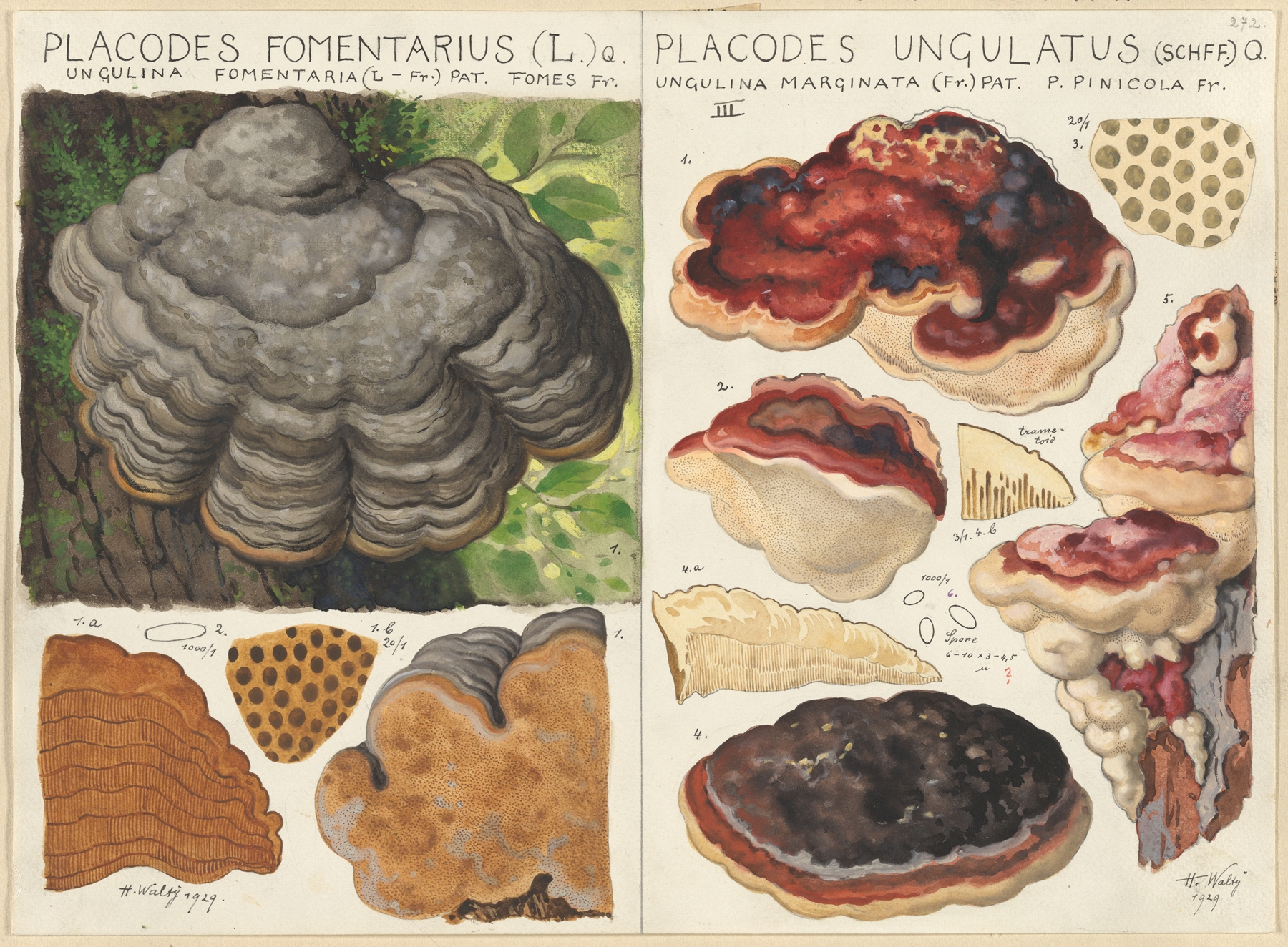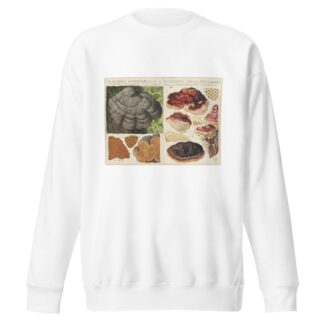Description
Polystictus fomentarius, Placodes ungulatus by Hans Walty printed on a Hoodie
About the Hoodie
Modern fit
It provides a more tailored look than a regular fit
Comfortable
The fabric and fit of this item are extra comfy
Tear-away tag
Easily removable tear-away tag that allows you to add a custom inside label
Premium quality
The product is made from premium, high-quality materials
Classic unisex hoodie with a front pouch pocket and matching flat drawstrings. The 100% cotton exterior makes this hoodie soft to the touch.
- 65% ring-spun cotton, 35% polyester
- Charcoal Heather is 60% ring-spun cotton, 40% polyester
- Carbon Grey is 55% ring-spun cotton, 45% polyester
- 100% cotton face
- Fabric weight: 8.5 oz./yd.² (288.2 g/m²)
- Front pouch pocket
- Self-fabric patch on the back
- Matching flat drawstrings
- 3-panel hood
- Tear-away tag
Hans Walty (1868-1948)
Emanuel Johann Anton Walty, known as Hans E. Walty , was a drawing teacher at the district school in Lenzburg, a mycologist and a watercolorist. For decades, 500 of his illustrated plates of mushrooms were considered the standard work for identifying mushrooms, especially in Switzerland. These plates, which he created over a period of more than 30 years, were compiled into compendiums in several volumes and published in numerous editions between 1923 and 1953.
Walty spent the first ten years of his life in Gravellona in Piedmont, where his parents Johann Karl Albert and Karoline Walty-Furter hired a tutor for him. In 1878, he started attending the primary and district school in Lenzburg, and then the cantonal school in Aarau, due to a move. He then studied at the Basel School of Design and was employed by the decorative painting company Schultz in Leipzig from 1888. There he painted in churches, villas and state institutions. His legacy also includes the painting in the vestibule of the Swiss National Museum in Zurich and the ceiling decoration in the main post office in St. Gallen. In 1893, he married Margarete Schulz from Leipzig and became a teacher at the Zurich School of Applied Arts. In addition to mushrooms, his genres as a painter include landscapes and portraits.
Around 1900, he completed his artistic training in the field of the human figure at the Dresden Academy of Art, went to Rome for a time and then back to Leipzig. From 1921 he taught drawing in his hometown until he resigned from this position after twelve years due to illness. It was only after his recovery that he began publishing his mushroom plates, but he often had to revise them because new scientific findings had been published.






Reviews
There are no reviews yet.